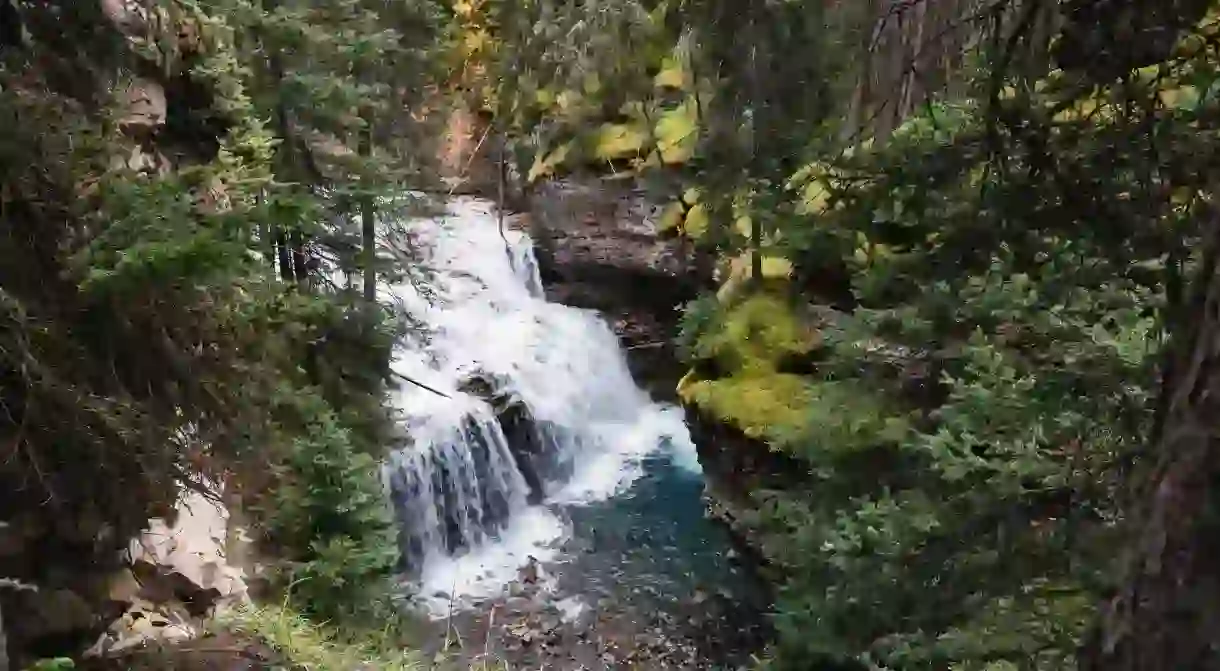The Most Beautiful Waterfalls To Visit Near Banff

Banff is synonymous with snowy peaks, avalanche chutes and waterfalls. And the waterfalls here change throughout the year, from spring melt in summer to the winter freeze, but they play an important role in the shaping of the mountains and the beauty of the environment. Here’s the best waterfalls you’ll want to visit in this part of the Canadian Rockies.
Did you know – Culture Trip now does bookable, small-group trips? Pick from authentic, immersive Epic Trips, compact and action-packed Mini Trips and sparkling, expansive Sailing Trips.
Cascade Mountain
Every brochure photograph of Banff includes a view down Banff Avenue framed by the mighty Cascade Mountain. Aptly named, Cascade has a prominent 950ft (290m) waterfall that is easily seen from the highway. When it freezes in winter, climbers frequent this spot, although it’s fairly easy to hike beside the falls in the warmer months.
Bow Falls
Located within the town, the Bow Falls made their name in Marilyn Monroe’s 1954 film River of No Return. The falls are located on the Bow River, just below the Fairmont Banff Springs Hotel. Water volumes can change daily. It is possible to raft, canoe or float to Canmore from below the falls. Look out for the public phone box here – there is no phone, it was ripped out by a grizzly bear – but you can still see the clawmarks it left behind.
Johnston Canyon
Driving west from Banff, the old 1A highway leads to Johnston Canyon. This extremely popular hike leads to the lower falls on a trail of about 1mi (1.5km), and the slightly more remote upper falls, with a hike of 2.5mi (4km). This is one of the park’s most accessible trails and leads through the canyon. The route is one way in and back, but it is worth the effort, despite the crowds. Even on rainy days, this walk is scenic and enjoyable – and the local café offers a good breakfast.
Lake Louise
At the far end of Lake Louise, there is a trickle of water that freezes each winter; this is a good place to see ice climbers. The ice can reach 300ft (91m) high and the ice can be seen as late as June. There is only one track around the lake and it stretches for just over a mile (2km). In summer, look for out rock climbers on the cliffs just beyond the waterfall.
Bow Glacier Falls
Roughly 20 minutes north of Lake Louise, on Highway 93, is Bow Lake, which feeds the Bow River. At the far end of the lake is Bow Glacier, which flows from the Wapta Icefield. The impressive Bow Glacier Falls can be seen from the road, but you can park up and walk to the falls from Num-Ti-Jah Lodge. The round trip will take around 3 hours.
The Weeping Wall and Bridal Veil Falls
Further north, on the Icefields Parkway, is the Weeping Wall where, just south of the Big Bend and Jasper National Park, Cirrus Mountain sheds its tears. It is best visited in winter, although there are a lot of climbers here. There is a roadside pull-in for viewing, and an easy trail at the base of the cliffs. A little further up the road, at the top of the Big Bend, the Bridal Veil Falls are Alberta’s highest falls at 1,200ft (366m), flowing down the side of Mount Cirrus into North Saskatchewan.













